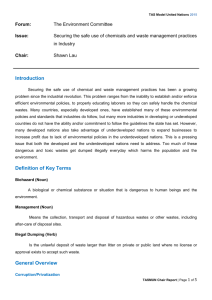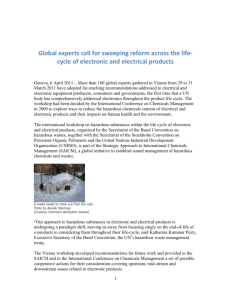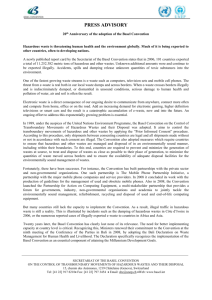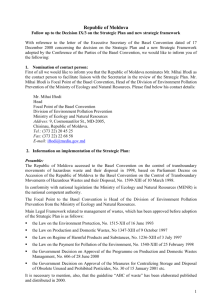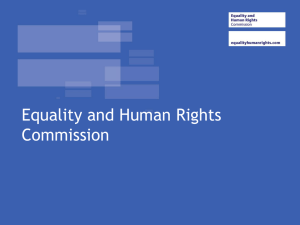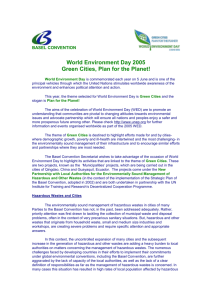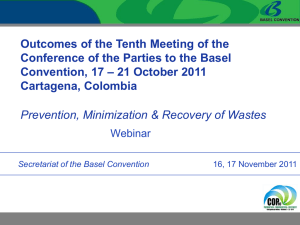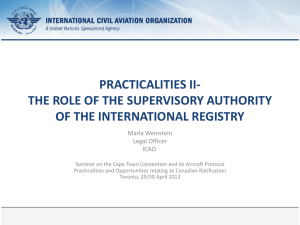The Basel Convention and its application to ship recycling
advertisement
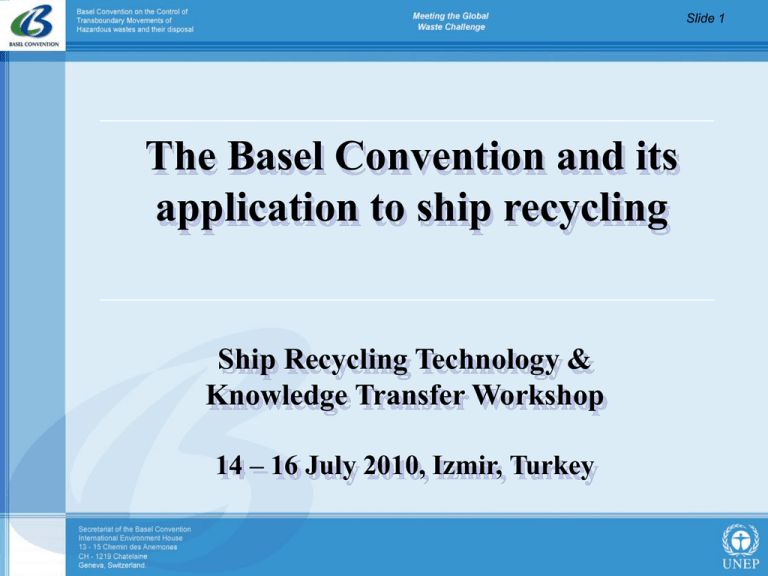
Slide 1 The Basel Convention and its application to ship recycling Ship Recycling Technology & Knowledge Transfer Workshop 14 – 16 July 2010, Izmir, Turkey Slide 2 The Basel Convention on the Control of Transboundary Movements of Hazardous Wastes and their Disposal • Adopted on 22 March 1989 • Entered into force on 5 May 1992 • 172 Parties to the Convention as at June 2010, covering the five UN Regional Groups Slide 3 Main Goal of the Convention To protect, by strict control, human health and the environment against the adverse effects resulting from the generation and management of hazardous wastes and other wastes Slide 4 Which means… • Strong controls have to be applied from the moment of generation of hazardous waste to its storage, transport, treatment, reuse, recycling, recovery and final disposal Slide 5 Pillars of the Convention I. Environmentally sound management (ESM) of hazardous wastes and other wastes II. Regulation of transboundary movement of hazardous wastes and other wastes: “PIC procedure” AND Control and Enforcement mechanisms (to deliver the above) Slide 6 Basel and the ship recycling issue (1) • On BC agenda since late 1990s • Noted need to improve standard of ship dismantling worldwide • Technical Guidelines on ship dismantling adopted in 2002 Slide 7 Basel and the ship recycling issue (2) Decision VII/26 (COP 7 in 2004): “a ship may become waste as defined in Article 2 of the Basel Convention and at the same time may be defined as a ship under other international rules” Slide 8 Basel and the ship recycling issue (3) • IMO Assembly resolution in 2005: New legallybinding instrument on Ship Recycling • At COP 8 (2006) / COP 9 (2008): “Invites the IMO to ensure the draft ship recycling convention establishes an equivalent level of control as that established under the Basel Convention…” Slide 9 Basel and the ship recycling issue (4) Parties to carry out a preliminary assessment on whether the Hong Kong Convention establishes an equivalent level of control and enforcement as that established under the Basel Convention after having developed the criteria necessary for such assessment (Decision IX/30) Slide 10 Assessment of Equivalency: The Process (1) • Began in May 2010 • Step one - development of criteria: – Taking into account: • The special characteristics of ships and international shipping; • The principles of the Basel Convention and the relevant decisions of the Conference of the Parties; • The comments submitted by Parties and other relevant stakeholders, as appropriate. Slide 11 Assessment of Equivalency: The Process (2) • Result - development of criteria in four broad categories: – Scope and applicability – Control – Enforcement – Exchange of information by Parties / cooperation and coordination Slide 12 Assessment of Equivalency: The Process (3) • Step two - preliminary assessment • Result - [comments] compiled • Next step - Parties and other relevant stakeholders to: – Review the criteria developed – Identify relevant articles, regulations and decisions in each Convention – Conduct their own preliminary assessments Slide 13 Assessment of Equivalency: The Process (4) • October 2011 COP 10: assessments submitted “for consideration and action, as appropriate” Slide 14 Assessment of Equivalency: Potential Outcomes (1) • Basel Convention Parties may or may not take action following completion of the equivalency process – No action: treaties co-exist – Action: theoretically - COP decision (further work, temporary or final clarification) or amendment to the Basel Convention? Slide 15 Assessment of Equivalency: Potential Outcomes (2) • Further considerations: – ships excluded from the Hong Kong Convention – Basel Convention Parties not Parties to the Hong Kong Convention – downstream disposal facilities and management of wastes in an environmentally sound manner – Technical Guidelines and Training Manuals on specific waste streams, treatment technologies, etc. Slide 16 Environmentally Sound Management under the Basel Convention • Enhance the implementation and enforcement of the Basel Convention – ESM of downstream waste management – As transposed into national legislation: • Waste management regulations • Hazardous waste regulations • Pakistan national legislation: – Pakistan Environmental Protection Act, 1997 – Hazardous Substance Rules – And? Slide 17 Elements for control Downstream waste management WASTE GENERATOR DEFINITION OR CLASSIFICATION OF WASTE 1 2 5 5 * TRANSPORTATION FACILITIES Source: David C Wilson 1999 Regulatory Tools for Control Slide 18 Steps to enhance implementation and enforcement of Basel (1) I. Legal and institutional framework • Quantify the problem – Quantities of hazardous wastes generated or imported determined through a National Inventory of Hazardous waste • Determine waste policy / strategy • Strengthen / develop national legislation – Model national legislation – Checklist for the legislator Slide 19 Steps to enhance implementation and enforcement of Basel (2) • Institutional strengthening – training and awareness raising of those involved in the chain of control and enforcement • regulators, enforcement officers, etc. • Also include relevant stakeholders including waste generators, disposal workers including those handling and transporting waste, etc. • Systems for monitoring, action in case of breach • Traceability of waste management operations – from “generator”, to “transporter”, to “disposer” Slide 20 Steps to enhance implementation and enforcement of Basel (3) II. Infrastructure development • According to needs e.g. incineration, landfill, etc. – Basel Convention technical guidelines for disposal operations and priority waste streams • How to develop? – External funding (donors), public private partnerships… Slide 21 Thank you For further information Visit the Basel Convention’s Website: www.basel.int/ships Tel: [+41 22] 917 8331 Fax: [+41 22] 797 3454 Email: susan.wingfield@unep.org
